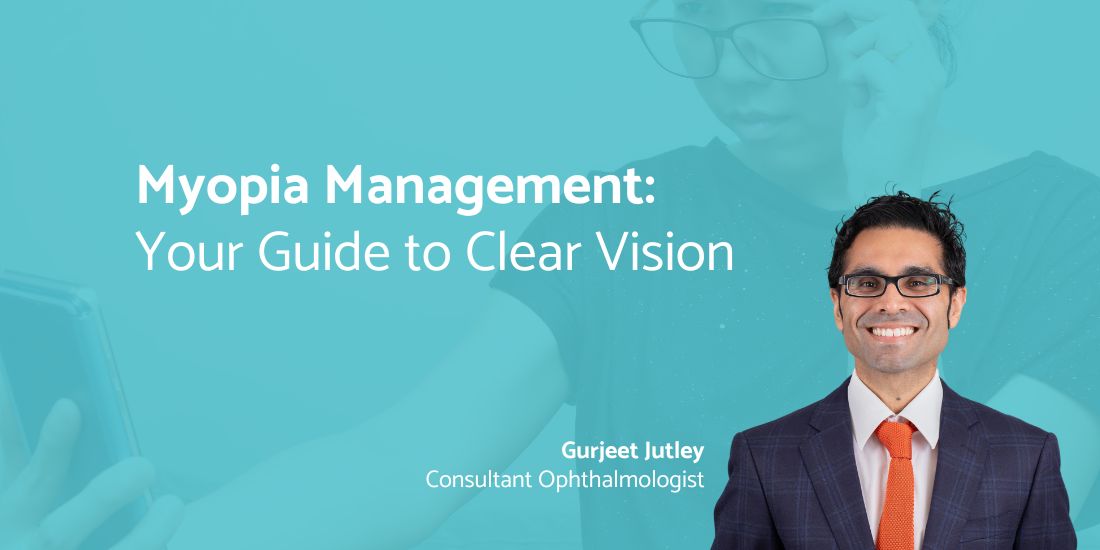As we observe Myopia Awareness Week from May 13th to 19th, it gives us an opportunity to explore this prevalent eye condition affecting millions worldwide. In this article, Gurjeet Jutley, Consultant Ophthalmologist and Eye Surgeon in Oxford, aims to raise awareness and provide in-depth insights into the diagnosis, causes, symptoms, and management of myopia.
What is Myopia?
Myopia, commonly referred to as near-sightedness or short-sightedness, is a refractive error where distant objects appear blurry while close objects remain clear. By 2050, it’s estimated that half the global population, around five billion people, will be affected by myopia. This condition can significantly impact daily activities such as driving, reading, and watching television. Myopia is typically diagnosed during routine eye exams, where visual acuity and refraction tests are performed to assess the extent of near-sightedness.
Causes and Risk Factors
Myopia occurs when the eyeball is too long, resulting in a mismatch between the focus point of the lens and the position of the retina. Genetic predisposition plays a significant role, with myopia often running in families. Additionally, lifestyle factors such as prolonged close-up activities, increased screen time, and limited outdoor exposure during childhood have been linked to the development of myopia. Environmental factors, including urbanisation and educational demands, also contribute to the rising prevalence of myopia worldwide.
Symptoms and Diagnosis
Symptoms of myopia in children may include sitting close to screens, frequent eye rubbing, and complaints of tiredness or headaches. Adults may experience difficulty reading distant objects, eye strain, headaches, and ‘squinting’. Diagnosis involves comprehensive eye exams, including visual acuity and refraction. Early detection and intervention are crucial for effectively managing myopia and preventing further vision impairment.
Complications and Management
Severe myopia can increase the risk of complications such as glaucoma, retinal detachment, neovascular membranes and cataracts. Myopia management aims to reduce progression, particularly in young age, and prevent sight-threatening conditions. Options include corrective eyeglasses, contact lenses, and specialty lenses proven to slow myopia progression. Orthokeratology, a non-surgical treatment involving the use of specially designed contact lenses to reshape the cornea, has shown promising results in controlling myopia progression in children. Laser visual correction, refractive surgery or clear lens extraction may be considered for adults with stable prescriptions.
Prevention and Lifestyle Changes
While there is no cure for myopia, certain lifestyle changes can help manage the condition and reduce progression. Limiting screen time, maintaining proper reading distances, taking regular breaks, spending time outdoors, and ensuring well-lit environments can all contribute to reducing myopia progression. Regular eye exams are essential for early detection and timely intervention. Myopia management programs, tailored to individual needs, play a crucial role in preserving vision and ensuring optimal eye health.
Let’s raise awareness and take proactive steps towards managing myopia during Myopia Awareness Week and beyond.
For further information on myopia, its implications, and available treatments, contact expert ophthalmologist in Oxford, Gurjeet Jutley.

